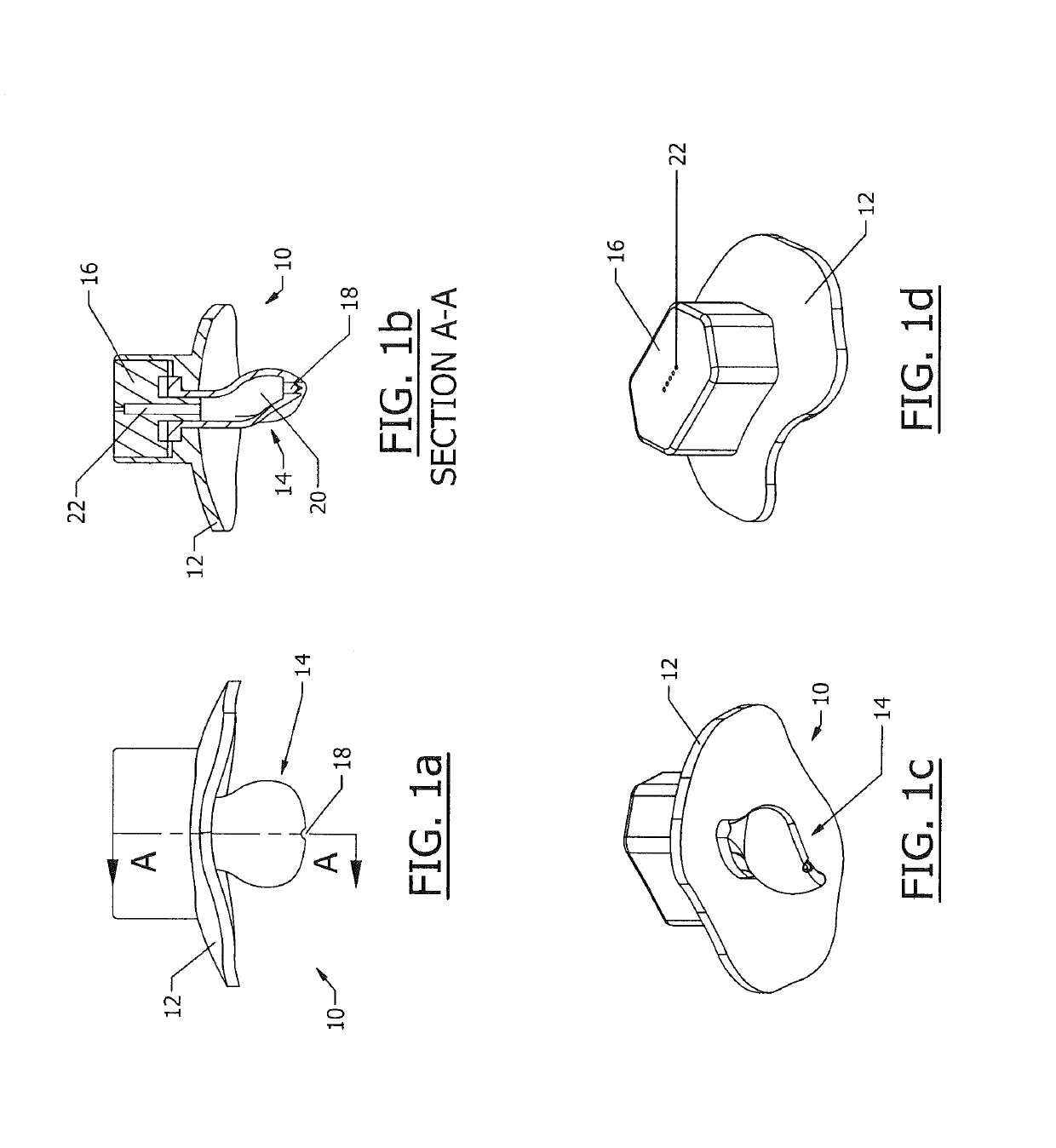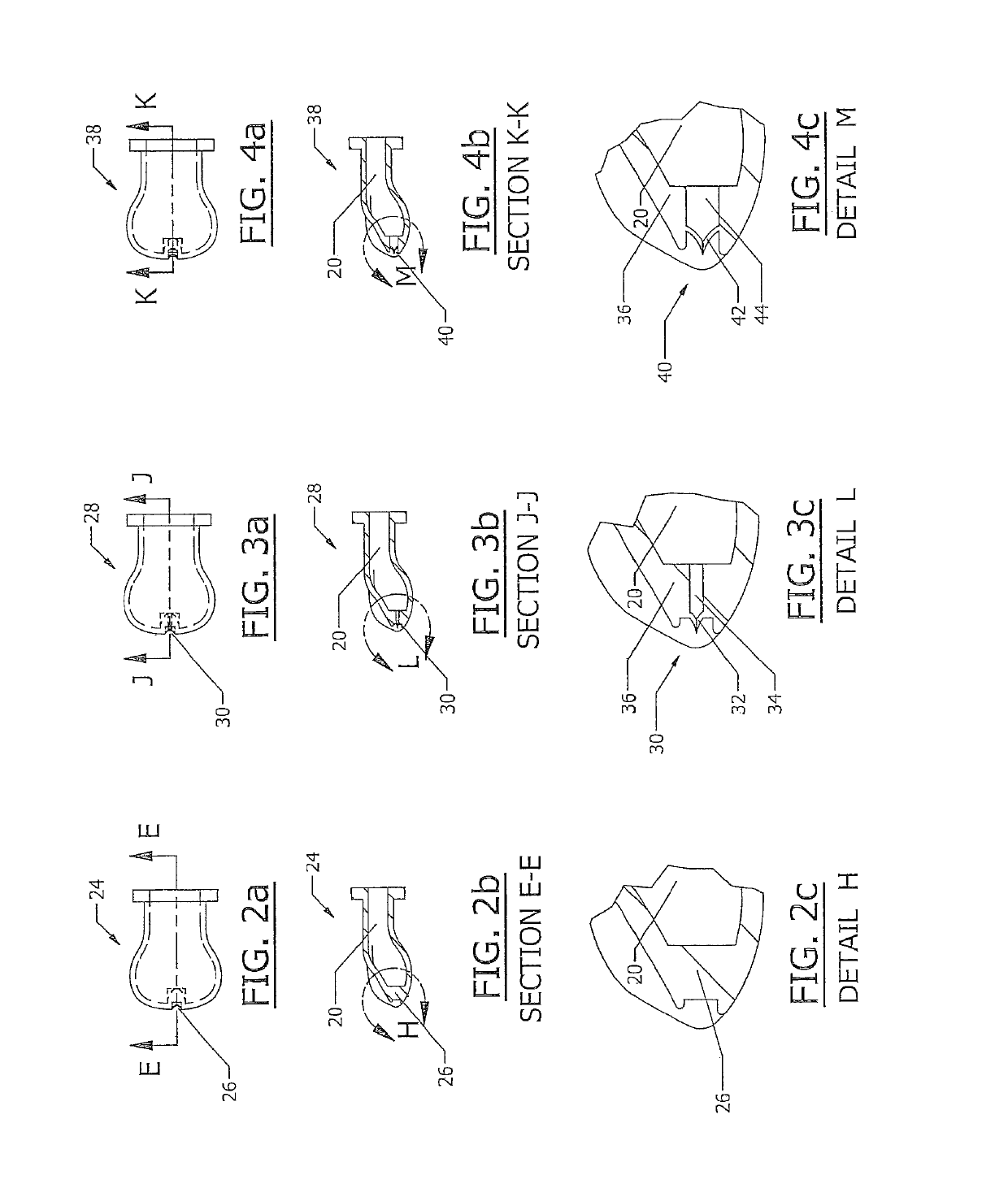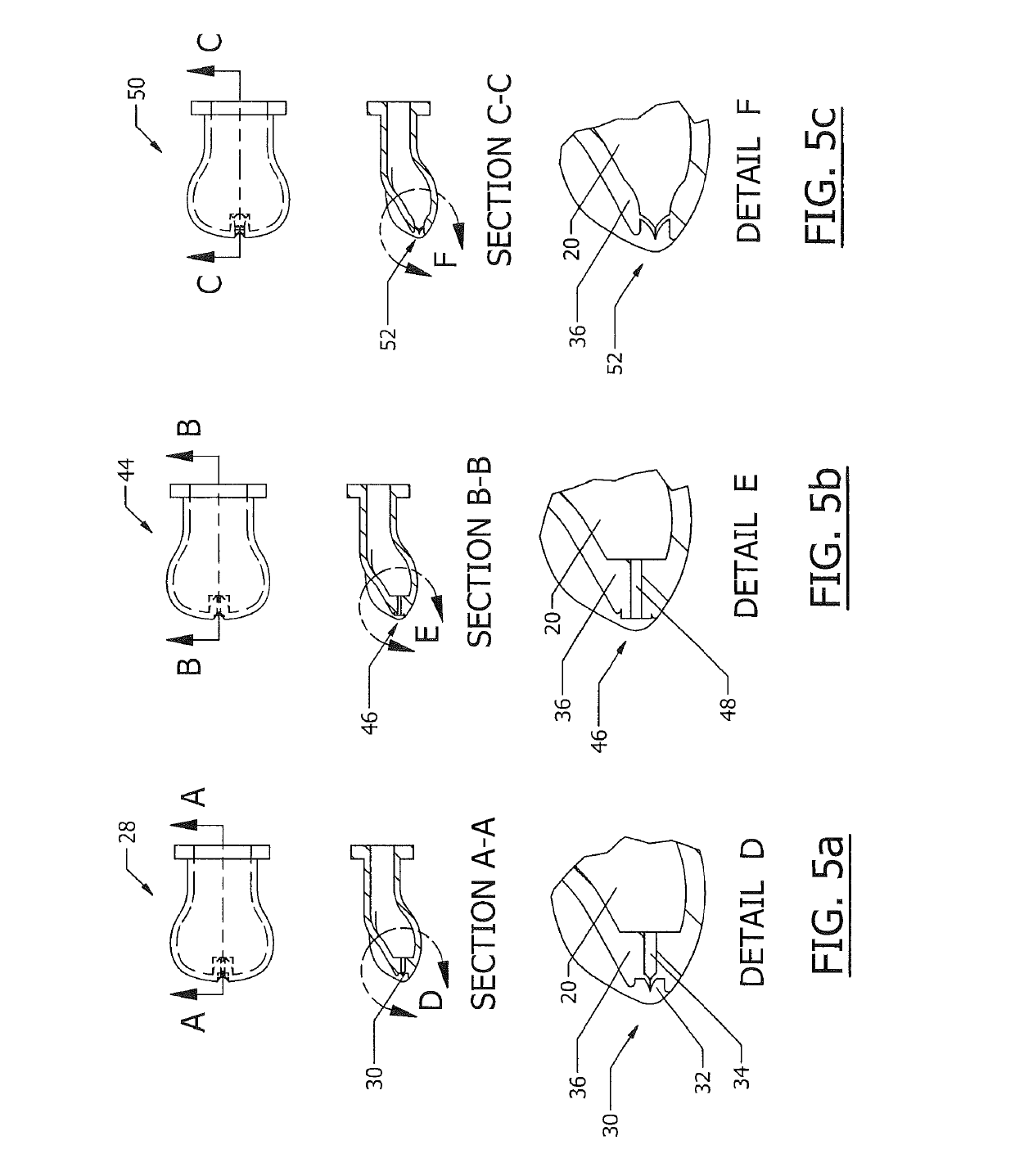Flow-controlling pacifier weaning apparatus
a weaning apparatus and flow control technology, applied in the field of pacifiers, can solve problems such as considerable stress, and achieve the effect of minimizing rejection and maximizing apparatus adoption
- Summary
- Abstract
- Description
- Claims
- Application Information
AI Technical Summary
Benefits of technology
Problems solved by technology
Method used
Image
Examples
Embodiment Construction
[0038]The present disclosure now will be described more fully hereinafter with reference to the accompanying drawings, in which preferred implementations of the disclosure are shown. This disclosure may, however, be embodied in many different forms and should not be construed as limited to the implementations set forth herein; rather, these implementations are provided so that this disclosure will be thorough and complete, and will fully convey the scope of the disclosure to those skilled in the art. For example, references may be made herein to directions and orientations including vertical, horizontal, diagonal, right and left, front and back; it should be understood, however, that any direction and orientation references are simply examples and that any particular direction or orientation may depend on the particular object, and / or the orientation of the particular object, with which the direction or orientation reference is made. Like numbers refer to like elements throughout.
[0...
PUM
 Login to View More
Login to View More Abstract
Description
Claims
Application Information
 Login to View More
Login to View More - R&D
- Intellectual Property
- Life Sciences
- Materials
- Tech Scout
- Unparalleled Data Quality
- Higher Quality Content
- 60% Fewer Hallucinations
Browse by: Latest US Patents, China's latest patents, Technical Efficacy Thesaurus, Application Domain, Technology Topic, Popular Technical Reports.
© 2025 PatSnap. All rights reserved.Legal|Privacy policy|Modern Slavery Act Transparency Statement|Sitemap|About US| Contact US: help@patsnap.com



